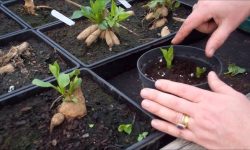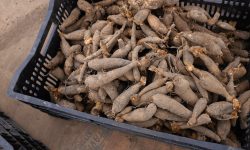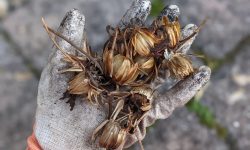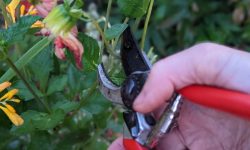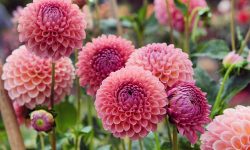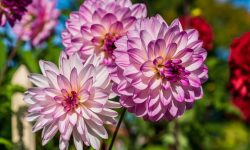Salvias are cherished for their vibrant spikes of color, long bloom time, and ability to attract pollinators like bees and hummingbirds. But without proper pruning, even the healthiest salvias can become leggy, sparse, and less flower-filled over time. Knowing how to prune salvias without damaging new growth is the key to keeping your garden lush and full of life from spring to fall.
In this guide, you’ll discover expert tips tailored to different salvia varieties, climates, and growth stages. Whether you’re caring for perennial salvias or tender annual types, this article will give you the confidence to prune with precision—encouraging bushier plants, extended blooming, and a more beautiful garden.
Why Pruning Salvias Is Essential
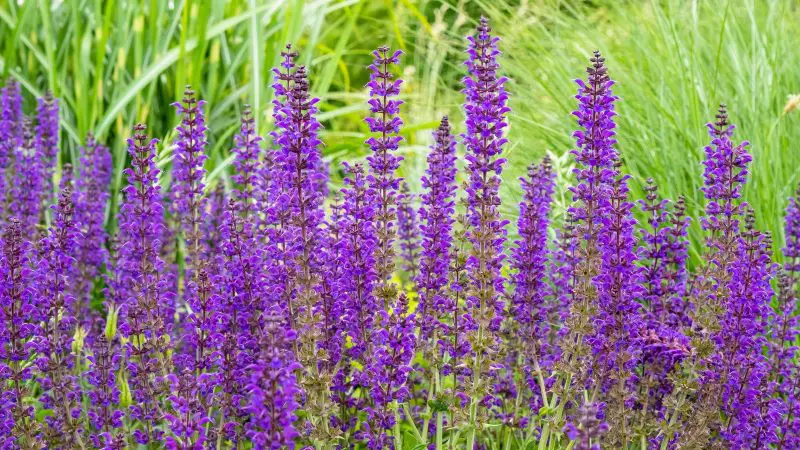
Pruning salvias is more than just a cosmetic task—it plays a vital role in maintaining plant health and encouraging lush, continuous blooms. Salvias, especially the perennial and woody types, can become woody, unruly, or sparse without regular trimming. Removing old or spent growth redirects energy into producing fresh stems and flowers, keeping the plant full and vibrant.
Pruning also prevents salvias from becoming too top-heavy or collapsing under their own weight. By shaping the plant and reducing congestion in the center, you improve airflow and light penetration, which reduces the risk of fungal diseases and pest infestations. For gardeners in colder climates, cutting back salvias at the right time can even help them survive winter more successfully by encouraging stronger root systems and regrowth in spring.
In short, learning how to prune salvias without damaging new growth ensures a longer blooming season, a tidier garden, and healthier plants that return stronger year after year.
Understanding Different Types of Salvias
Herbaceous Perennial Salvias
Herbaceous perennial salvias are among the easiest to prune because they naturally die back in winter and regenerate from the base. Once the frost has blackened their foliage, you can cut them down to a few inches above ground without fear of harming future growth. In colder zones, wait until early spring to prune so the old stems can offer some winter protection. As new shoots emerge in spring, you may also remove any remaining dead or weak stems to encourage strong, upright growth and more prolific flowering throughout the season.
Woody Subshrub Salvias
Woody salvias like Salvia greggii and Salvia microphylla require more precision when pruning. These plants develop semi-woody stems that don’t always resprout from old wood if cut too hard. The goal is to strike a balance—trim back about one-third of the plant’s height in early spring to shape it and remove any frost-damaged branches. Throughout the growing season, continue light pruning by deadheading and snipping stray shoots to keep the plant compact and flowering. Avoid cutting into thick, gray stems unless absolutely necessary.
Annual Salvias
Annual salvias grow fast, bloom generously, and complete their life cycle in one season. These include vibrant varieties like Salvia splendens, commonly seen in flower beds and containers. Pruning annual salvias is more about maintenance than structure. Regularly pinching or trimming spent flowers will encourage more blooms and keep the plant from getting leggy. You can also lightly shape them during the growing season to promote bushiness and airflow. Since they won’t overwinter, heavy pruning isn’t needed—just enough to keep them blooming at their best.
Best Time to Prune Salvias
Early Spring Pruning
Early spring is the ideal time for a thorough rejuvenation pruning, especially for herbaceous perennial salvias. As winter recedes and daytime temperatures begin to rise, observe your salvia for signs of life at the base—tiny green shoots or swelling buds. This signals that the plant is ready to grow and can safely be cut back. Use clean, sharp pruners to remove any dead stems from the previous season, cutting close to the base to make room for fresh growth. For woody salvias, this is also the right time to remove any frost-damaged or leggy stems, but avoid cutting into the thickest old wood, which may not regenerate.
Summer Pruning After First Bloom
Mid-summer is an excellent time to give your salvia a gentle refresh. After the first round of flowering fades, cutting back the spent flower stalks not only tidies the plant but also signals it to send up more blooms. For herbaceous types, you can reduce the plant’s height by up to one-third to stimulate new flower spikes. Woody salvias benefit from a more selective trim—remove only the faded blooms and leggy tips to maintain their natural shape. Summer pruning also improves air circulation, helping prevent powdery mildew and other summer-related stress issues.
Fall Maintenance
In fall, pruning depends heavily on your region’s climate. In warmer zones (USDA zones 8 and up), light pruning in autumn can help shape the plant and remove scraggly stems while maintaining a neat appearance. However, in colder regions, it’s best to resist the urge to tidy up too much. Instead, let the old growth remain to act as a protective mulch over the crown during freezing temperatures. Hard pruning in fall can weaken the plant’s ability to survive winter and delay regrowth in spring. Save major pruning for spring when the plant is ready to recover actively.
Tools You Need for Safe Pruning
Using the right tools ensures clean cuts that support healthy regrowth and reduce the risk of disease. Before you begin pruning salvias, take a moment to gather and prepare your equipment. A well-equipped gardener makes fewer mistakes and protects the plant’s natural shape and vitality.
Bypass Pruners for Clean Cuts
Bypass pruners are essential for most salvia pruning tasks. They operate like scissors and are perfect for making sharp, clean cuts on live stems without crushing plant tissue. Choose a high-quality pair with sharp blades and comfortable grips, especially if you’re pruning a large number of plants. Sterilize the blades before and after use with rubbing alcohol or a bleach solution to avoid spreading pathogens between plants.
Loppers for Thicker Stems
For woody salvias or mature stems that have grown thick over time, long-handled loppers provide extra leverage. These are ideal when pruning back overgrown salvias in early spring or when removing older, less productive branches. Like bypass pruners, loppers should also be kept clean and sharp to avoid tearing the stems.
Hand Shears or Hedge Shears for Shaping
When performing light seasonal shaping or trimming faded flower stalks in summer, hand shears or hedge shears can speed up the process. These tools are especially helpful for bushier varieties that respond well to mass deadheading. However, avoid using hedge shears for major structural cuts, as they may leave jagged edges or damage deeper parts of the plant.
Gloves and Eye Protection
Pruning salvias often involves reaching into dense foliage. Wearing gardening gloves protects your hands from splinters, thorns on nearby plants, and accidental nicks from tools. If you’re working with tall salvias or reaching into a crowded bed, eye protection can also prevent injury from bouncing stems or flying debris.
Cleaning Supplies for Disease Prevention
To ensure the health of your salvias and other garden plants, keep a clean cloth and disinfectant on hand during pruning. Wipe your tools between cuts if you notice any signs of disease on the stems—such as black spots, soft tissue, or mold. Preventing contamination through careful tool hygiene is one of the simplest but most effective steps in successful pruning.
Having these essential tools at the ready—and knowing how and when to use them—empowers you to prune salvias safely and with confidence, ensuring lush regrowth and vibrant blooms throughout the season.
How to Identify New Growth Before Pruning
Recognizing new growth is key to pruning salvias without cutting back healthy, developing stems. New growth typically appears at the base of the plant in early spring or along nodes on existing stems after flowering.
Look for soft, green shoots that are more vibrant and flexible than older wood. These may be just a few inches tall or emerging from leaf joints. In contrast, older stems are woody, brown, and rigid. Avoid cutting these fresh shoots, as they will form the foundation for the season’s blooms. Waiting until this growth is visible ensures you prune only what’s necessary and encourage fuller regrowth.
Step-by-Step Guide to Pruning Salvias
Step-by-Step Guide to Pruning Salvias
Start your pruning session by observing the entire plant carefully. Remove any dead, diseased, or damaged stems first, as these no longer serve the plant and may attract pests. These stems are usually brown, brittle, and leafless. Use sharp, clean pruners and make clean cuts close to the base or at a healthy node.
Next, focus on spent flower spikes. Cut them just above the nearest set of green leaves or active buds. This not only tidies the plant but encourages new blooms. If the plant is overgrown, you can trim back some of the longer stems by one-third to one-half their length. Always cut just above a leaf node at a slight angle. This promotes bushier growth and better airflow through the plant.
Observe how the plant responds in the following weeks. New shoots will often appear at the cut points. If necessary, repeat light pruning later in the season to maintain shape and prolong flowering. Consistent, careful pruning helps keep your salvias vigorous and beautiful.
Pruning Herbaceous Salvias
Herbaceous salvias, such as Salvia nemorosa or Salvia guaranitica, die back naturally in cold climates. In early spring, once the risk of frost passes and new shoots emerge, cut all remaining old growth down to within a few inches of the ground. These new shoots will quickly take over and become the plant’s main structure for the year.
Throughout the growing season, deadhead faded flowers by cutting just above a node or leaf pair. This simple maintenance encourages continual blooming. After the final flowering in late summer or fall, allow the plant to slow down naturally. Letting foliage die back naturally can help insulate the crown over winter.
Pruning Woody Salvias
Woody salvias, such as Salvia microphylla or Salvia greggii, require a more conservative approach. Their lower stems become woody with age and do not resprout easily if cut too harshly. Avoid cutting into old wood, especially if there are no visible green buds or leaves.
Instead, wait until early to mid-spring and look for new green shoots. Trim back only the softer, green growth by about one-third, shaping the plant while leaving enough foliage to support photosynthesis. Remove leggy stems, crossing branches, and faded flower spikes to encourage compact growth.
Every few years, woody salvias may benefit from rejuvenation pruning. This involves cutting the entire plant back to about 6–8 inches above the ground in early spring, but only if healthy buds are visible at that height. This resets the plant’s form and promotes stronger growth.
Pruning Annual Salvias
Annual salvias, such as Salvia splendens, are grown for a single season, so pruning focuses on maximizing blooms. Begin by pinching back the tips of young plants early in the season to promote bushier branching and prevent legginess.
As flowers fade, snip them off promptly to redirect energy into more flower production. This encourages a steady cycle of blooming. If plants begin to sprawl or lose their shape, a light trim can restore their form and encourage renewed vigor.
Since annual salvias do not return the next year, there is no need for heavy end-of-season pruning. Instead, you can remove the plants entirely after the first hard frost or once blooming declines.
Avoiding Common Pruning Mistakes
Many salvia growers make simple pruning errors that can lead to poor flowering or plant stress. One of the most common mistakes is pruning too early in spring before new growth is visible, which can result in frost damage or cutting off viable buds. Another error is cutting into woody stems of subshrub salvias—these areas often won’t regenerate, leading to bare, lifeless branches.
Over-pruning during the growing season can also reduce blooming, especially if you remove too much green growth that supports photosynthesis. Neglecting to sterilize your tools may introduce diseases. Always clean your pruners with rubbing alcohol before and after use.
Finally, avoid pruning in late fall in cold climates. While it might seem tidy, cutting too much can expose the crown to winter damage. It’s often better to leave some growth in place for added insulation. Understanding your salvia type and regional climate is the key to avoiding these common setbacks.
How Pruning Encourages More Blooms
Pruning salvias isn’t just about tidying up your plants—it’s a strategic way to unlock their full blooming potential. Each time you prune, especially after a flowering cycle, you stimulate the plant to produce new branches. These fresh stems are where future blooms form, so regular, timely pruning leads directly to more abundant and prolonged flowering.
When you remove spent flowers or leggy growth, the plant redirects its energy away from seed production and back into new vegetative growth and bud development. This keeps your salvias looking fresh and vibrant throughout the season. Additionally, cutting above a healthy leaf node triggers the development of lateral shoots, which often bear more flower spikes than the original stem.
In long-blooming salvias, such as Salvia guaranitica or Salvia microphylla, this cycle of cutting back and regrowth can happen multiple times a year. Even with annual types, deadheading and light shaping help push the plant to bloom vigorously until the end of its life cycle. With the right timing and technique, pruning becomes one of the most powerful tools in your gardening routine to ensure a non-stop show of color.
Regional Considerations When Pruning
Your local climate plays a big role in how and when you should prune salvias. In warm regions with mild winters, such as USDA zones 8–11, salvias may stay evergreen or semi-evergreen. In these areas, light pruning can be done almost year-round, with a more thorough trim in early spring to shape and rejuvenate the plant.
In cooler regions where frost is common, pruning should be more cautious. Avoid cutting salvias back hard in fall, as the old stems provide winter protection. Instead, wait until early spring, once new growth begins to emerge at the base, then prune away dead stems.
High humidity areas may require more frequent deadheading and thinning to reduce the risk of fungal issues, while dry climates benefit from shaping that encourages airflow. Always adjust your pruning timing and intensity based on your region’s frost dates, rainfall patterns, and seasonal temperatures to protect your salvias and maximize their blooms.
Watering and Fertilizing After Pruning
After pruning salvias, proper watering and feeding help the plant recover quickly and support vigorous new growth. Water the plant thoroughly right after pruning to settle the soil and reduce transplant shock, especially if you’ve removed a significant portion of foliage. In the following days, keep the soil evenly moist but not soggy, allowing the top inch to dry out between waterings.
Fertilizing at this stage gives salvias the energy they need to produce fresh shoots and abundant flowers. Use a balanced, water-soluble fertilizer diluted to half strength, or opt for a slow-release formula applied around the base. Avoid high-nitrogen fertilizers, which may promote excess leafy growth at the expense of blooms. Feeding once every four to six weeks during the growing season keeps the plant strong, vibrant, and ready to rebloom after each pruning cycle.
How to Rejuvenate Older, Woody Salvias
Rejuvenating older, woody salvias requires a careful yet firm approach to restore vigor and encourage lush, blooming growth. Start in early to mid-spring, just as new green shoots emerge. Begin by cutting back up to one-third of the oldest, woodiest stems all the way to the base. This helps stimulate fresh basal growth without shocking the plant. Avoid cutting into bare, leafless wood unless you’re certain it’s dead, as it may not resprout.
Over the next two to three growing seasons, gradually remove additional woody stems, replacing them with new, softer ones. Light shaping and deadheading during the season will maintain a neat appearance and encourage continual blooming. Adding compost around the base and consistent watering during regrowth supports healthy recovery. With patience and strategic pruning, even declining salvias can return to a full, flowering form.
Propagation Tips During Pruning
Pruning time is ideal for propagating salvias, especially if you’re already cutting healthy, non-woody stems. Choose 4- to 6-inch cuttings from strong, green growth that hasn’t flowered yet. Snip just below a leaf node, then remove the lower leaves to expose the stem. Dip the cut end in rooting hormone to encourage faster development.
Place the cutting in moist, well-draining potting mix and keep it in a warm, bright spot out of direct sunlight. Covering with a plastic dome or bag helps retain humidity. Within a few weeks, roots should begin to form. Once established, transplant the young salvia into a larger container or directly into the garden. Propagating during pruning not only reduces waste but also gives you more plants to enjoy or share.
Long-Term Benefits of Pruning Salvias Properly
Pruning salvias the right way offers more than just seasonal beauty—it sets the stage for healthier, more vigorous plants year after year. By removing old or damaged growth, you prevent disease buildup and improve airflow, reducing the risk of fungal issues. Regular pruning also encourages denser, bushier growth, which helps salvias resist wind and maintain a tidy, full shape.
Over time, consistent pruning increases the number of flowering stems, resulting in more vibrant and extended blooming periods. It also helps prevent legginess, especially in fast-growing or sprawling varieties. For woody salvias, occasional rejuvenation pruning keeps them productive and youthful. With proper pruning, your salvias will reward you with lush foliage, continuous blooms, and long-lasting garden performance season after season.
FAQ: Frequently Asked Questions About Pruning Salvias
When is the best time of year to prune salvias?
The ideal pruning time depends on the type of salvia. For most perennial and woody salvias, prune in early to mid-spring after the last frost, once new growth appears. This prevents cold damage and ensures you don’t accidentally remove emerging shoots. For herbaceous salvias, cut back old stems in spring and deadhead throughout summer. Annual salvias can be pruned anytime during the growing season to extend blooming.
How do I know if I’ve pruned too much?
If your salvia has only a few green stems or no new shoots visible after pruning, you may have cut too harshly—especially on woody types. Always avoid cutting into dry, leafless wood unless you’re sure it’s dead. Prune gradually and monitor regrowth; healthy salvias bounce back quickly when pruned above leaf nodes or young shoots.
Can I prune salvias in fall?
Fall pruning is generally not recommended for salvias in colder climates. Cutting them back before winter can expose tender stems to frost damage. Instead, wait until spring for a full pruning. However, light deadheading of spent flowers in fall is fine, especially in warm climates where salvias bloom longer.
Do I need to fertilize salvias after pruning?
Yes, applying a balanced fertilizer after pruning can help stimulate vigorous new growth and abundant blooms. Choose a low-nitrogen, phosphorus-rich fertilizer to encourage flowering. Water deeply after fertilizing to help nutrients absorb into the root zone and reduce transplant shock from pruning.
How do I prune salvias to propagate them?
During regular pruning, take healthy, non-flowering stem cuttings about 4–6 inches long. Remove lower leaves and plant them in a moist, well-draining propagation mix. Keep them in indirect light and cover with a plastic dome or bag to maintain humidity. With warmth and care, roots will form in 2–4 weeks, giving you new salvia plants to expand your garden.
Conclusion: Prune with Confidence
Pruning salvias doesn’t have to be intimidating. With a clear understanding of your plant’s type, the right timing, and proper technique, you can shape your salvias confidently without damaging new growth. Every cut you make has the potential to spark a flush of vibrant blooms and keep your garden thriving.
Whether you’re tending a few salvias in containers or managing a border full of them, thoughtful pruning will reward you with color, fragrance, and beauty from season to season.

